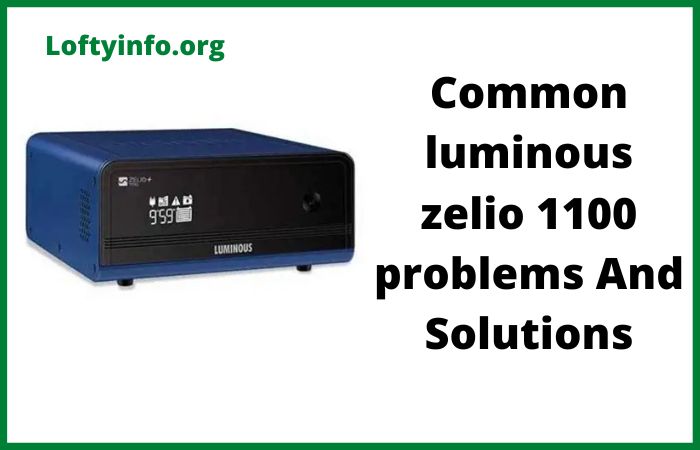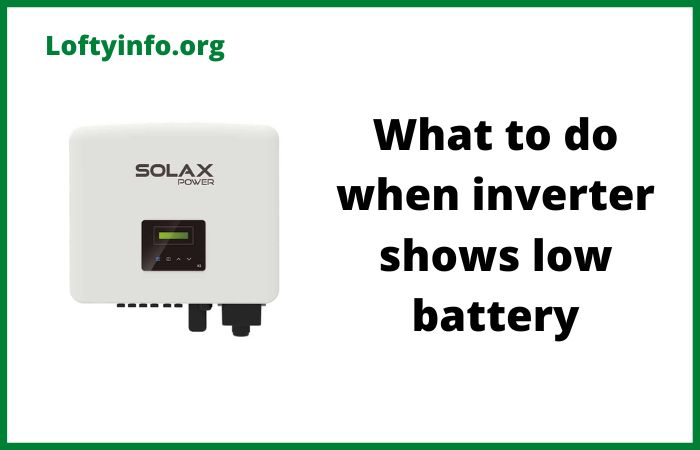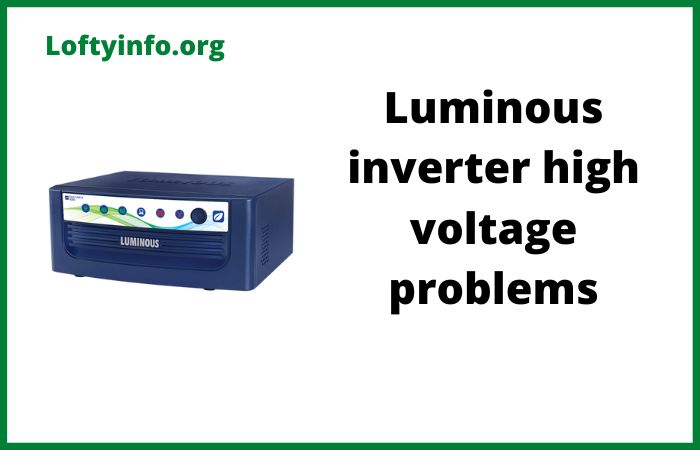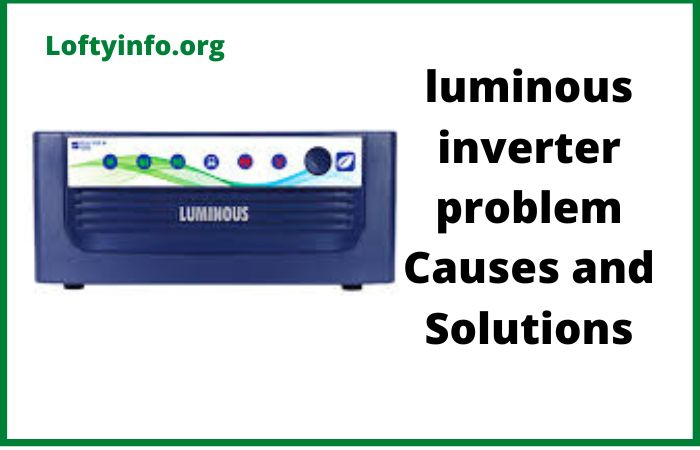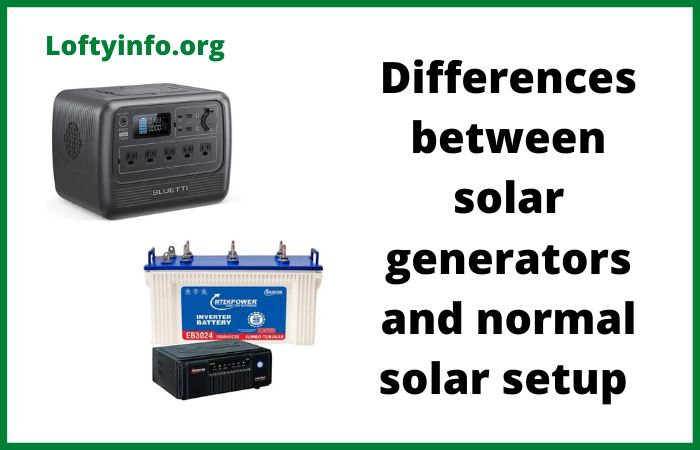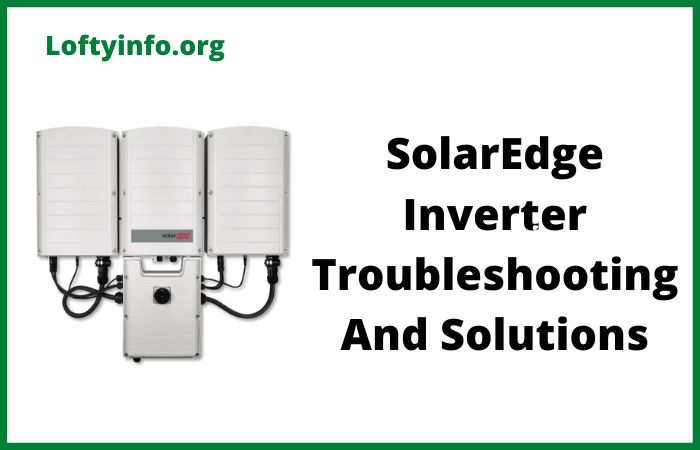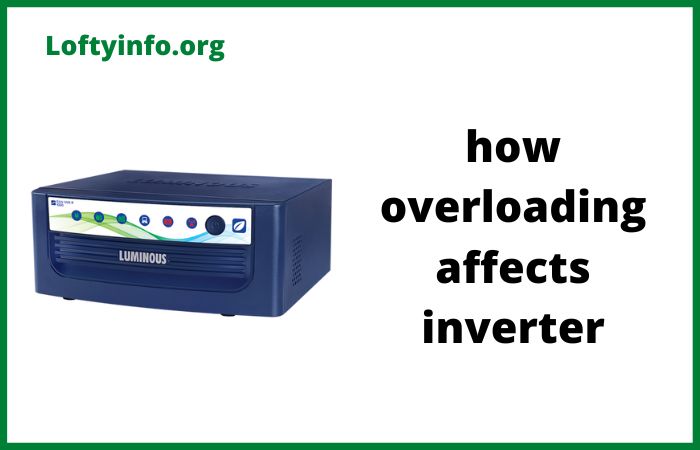Luminous Zelio 1100 Problems: Causes and Solutions
The Luminous Zelio 1100 is a popular pure sine wave inverter designed to provide reliable backup power during outages.
With its 900VA capacity and compatibility with a wide range of appliances, it has become a household favorite across many regions.
Just like any electronic device, users occasionally encounter issues that can disrupt its performance.
Understanding the common Luminous Zelio 1100 problems, their root causes and effective solutions can help you restore functionality quickly and extend the lifespan of your inverter.
Luminous Zelio 1100 Problems
1) Battery Not Charging
One of the most frequent issues users face is when the inverter fails to charge the connected battery.
This problem can stem from several underlying causes, each requiring a specific troubleshooting approach.
Faulty Battery Connections: Loose or corroded battery terminals are often the primary culprits.
When connections become weak, the charging circuit cannot function properly.
To troubleshoot this, first switch off the inverter and disconnect it from the mains.
Carefully inspect both positive and negative terminals for any signs of corrosion, which appears as a white or greenish powdery substance.
Clean the terminals using a wire brush and a mixture of baking soda and water.
After cleaning, ensure all connections are tight and secure.
Apply a thin layer of petroleum jelly to prevent future corrosion.
Defective Battery: Batteries have a limited lifespan, typically ranging from three to five years depending on usage and maintenance.
An aging or damaged battery may not accept charge regardless of the inverter’s condition.
To verify if the battery is at fault, use a multimeter to check the voltage.
A healthy 12V battery should read between 12.4V to 12.7V when fully charged.
If the reading is significantly lower or if the battery shows physical signs of damage like swelling or leakage, replacement is necessary.
Blown Fuse: The Zelio 1100 incorporates protective fuses that safeguard the charging circuit.
A blown fuse will completely interrupt the charging process.
Locate the fuse holder, usually positioned near the battery connection points or inside the inverter casing.
Remove the fuse and inspect it visually for a broken filament or test it with a multimeter for continuity.
Replace any blown fuse with one of identical rating to restore charging functionality.
Faulty Charging Circuit: Internal component failure within the charging circuit can prevent battery charging.
This might involve damaged MOSFETs, failed capacitors or issues with the charging controller.
If you’ve eliminated all other possibilities, the charging circuit itself may need professional attention.
Contact Luminous customer service or visit an authorized service center for proper diagnosis and repair.
2) Inverter Not Switching to Battery Mode
When mains power fails, the inverter should automatically switch to battery mode to provide backup power.
If this transition doesn’t occur, your appliances will shut down during outages.
Insufficient Battery Voltage: The inverter requires minimum battery voltage to operate.
If your battery is deeply discharged or damaged, the inverter may refuse to switch to battery mode as a protective measure.
Check the battery voltage using a multimeter.
If it reads below 10.5V for a 12V system, the battery needs charging or replacement.
Try charging the battery separately using an external charger, then reconnect it to the inverter.
Overload Condition: The Zelio 1100 has a rated capacity of 900VA.
Connecting appliances that exceed this limit will trigger the overload protection, preventing the inverter from switching to battery mode.
Calculate the total wattage of all connected devices.
Disconnect high-power appliances like air conditioners, water heaters or heavy-duty motors.
Start with essential, low-power devices and gradually add others while monitoring the inverter’s performance.
Inverter in Fault Mode: The inverter may enter fault mode due to various internal errors, indicated by specific beep patterns or LED displays.
Refer to your user manual to decode the fault indicators.
Common faults include high battery voltage, low battery voltage or internal temperature issues.
Perform a complete reset by disconnecting the inverter from mains power and battery for at least five minutes, then reconnecting everything in the proper sequence.
Faulty Inverter Switching Circuit: If the automatic changeover mechanism fails, the inverter won’t transition to battery mode.
This typically involves relay problems or issues with the sensing circuit.
Listen carefully for the relay click sound when power is disconnected, if absent, the relay may need replacement.
This repair requires technical expertise and should be handled by qualified technicians.
3) Continuous Beeping or Alarm
Persistent beeping serves as the inverter’s way of communicating various conditions or problems that require attention.
Low Battery Alarm: When battery voltage drops below a certain threshold during discharge, the inverter emits regular beeps to warn you of imminent shutdown.
This is normal during extended power outages.
To resolve this, reduce the load by disconnecting non-essential appliances, allowing the remaining battery capacity to last longer.
Once mains power returns, allow adequate time for full battery recharging.
Overload Warning: Connecting appliances beyond the inverter’s capacity triggers continuous or rapid beeping.
Immediately disconnect some devices to bring the total load within the 900VA limit.
Identify power-hungry appliances and consider using them only when mains power is available.
Remember that devices with motors or compressors often draw higher starting current than their rated power.
Mains Abnormality: Voltage fluctuations, frequency instability or poor mains quality can cause alarm beeping.
Check if your area is experiencing power quality issues.
Use a voltage stabilizer upstream of the inverter if your region has frequent voltage variations.
Ensure proper earthing of the inverter as poor grounding can also contribute to this problem.
Internal Temperature Rise: The Zelio 1100 includes thermal protection that activates when internal components overheat.
Ensure adequate ventilation around the inverter, maintain at least 6 inches of clearance on all sides.
Clean any dust accumulation on ventilation grills using a soft brush or compressed air.
Avoid installing the inverter in enclosed spaces, direct sunlight or near heat sources.
If overheating persists despite proper ventilation, internal cooling fans may have failed and require professional servicing.
4) Display Not Working or Incorrect Readings
The LCD display provides crucial information about operating status, battery condition and load levels.
Display problems can make it difficult to monitor inverter performance.
Loose Display Connection: Internal vibrations or improper handling during installation can loosen the ribbon cable connecting the display to the main board.
This requires opening the inverter casing, which should only be done by technically competent individuals or service professionals.
If you’re comfortable doing so, disconnect mains and battery power, open the casing, locate the display connector and ensure it’s firmly seated.
This may void your warranty if the unit is still covered.
Display Unit Failure: The LCD module itself can fail due to age, humidity exposure, or manufacturing defects.
If the backlight works but characters are missing or garbled, the display likely needs replacement.
Contact Luminous service centers for genuine replacement parts.
While the inverter can continue functioning without a working display, you lose the ability to monitor critical parameters.
Software Glitch: Occasionally, the microcontroller managing the display may experience software errors.
Perform a hard reset by disconnecting both battery and mains power for ten minutes.
This allows all capacitors to discharge completely and resets the internal processor.
Reconnect everything and power up the system, this often resolves display glitches.
5) Battery Draining Quickly
Rapid battery discharge during power outages significantly reduces backup time, defeating the inverter’s primary purpose.
Excessive Load: Running high-power appliances drains the battery much faster than the inverter’s design specifications.
Calculate your actual power consumption and compare it with the battery’s capacity.
A typical 150Ah battery paired with the Zelio 1100 should provide several hours of backup for moderate loads.
Prioritize essential devices and disconnect energy-intensive appliances during outages.
Aging Battery: Battery capacity diminishes over time due to sulfation and plate degradation.
Even if the battery charges fully, an old battery won’t hold charge effectively.
Perform a capacity test by fully charging the battery, then running a known load while timing how long it lasts.
Compare this with the theoretical backup time based on battery capacity.
If actual performance falls significantly short, battery replacement is necessary.
Improper Charging: Undercharging or irregular charging cycles accelerate battery degradation.
Ensure the battery receives regular, complete charging cycles.
Avoid frequent deep discharges, which stress the battery.
If possible, allow the battery to charge fully after each power outage before the next discharge cycle.
Check charging voltage using a multimeter, it should read approximately 13.8V to 14.4V during the charging phase for a 12V battery.
Parasitic Drain: Some inverters consume a small amount of power even when idle.
While this is normal, excessive idle consumption indicates a problem.
Verify that all connected appliances are actually turned off during backup.
Some devices draw standby power even when not in use.
Disconnect everything and observe if battery drain continues abnormally, if so, the inverter itself may have internal leakage requiring professional attention.
Preventive Maintenance Tips
Regular maintenance prevents many common Luminous Zelio 1100 problems causes and solution scenarios from developing.
Check battery water levels monthly if using a tubular battery, topping up with distilled water as needed.
Clean the inverter exterior and ventilation openings quarterly.
Perform a visual inspection of all connections semi-annually.
Exercise the battery by allowing complete charge-discharge cycles periodically, even if power outages are infrequent.
Keep the inverter firmware updated if your model supports updates.
Maintain a log of any unusual behavior, which helps technicians diagnose recurring issues more effectively.
Understanding these Luminous Zelio 1100 problems causes and solution approaches empowers you to address issues promptly and maintain optimal inverter performance.
While some problems require professional intervention, many common issues can be resolved through systematic troubleshooting and proper maintenance.
When in doubt, always consult the official user manual or contact authorized Luminous service centers to avoid voiding warranties or causing further damage.
With proper care and timely attention to problems, your Zelio 1100 can provide reliable backup power for many years.
Why Is Luminous Inverter Not Working After a Power Cut occurs
Why common solax inverter problems occur
Luminous zelio 1100 troubleshooting
3176 cat engine complete technical specs
How to prevent frequent inverter damage when connected to grid
